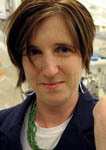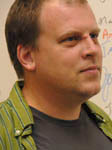The Genomics, Disease Ecology and Global Health Strategic Research Initiative Program and the Eck Institute for Global Health have announced the presentation of six awards to support pilot projects in the areas of genomics and bioinformatics. This announcement comes at a time in which Notre Dame has recently funded the expansion of core facilities in genomics and bioinformatics. The goal of this investment is to provide university-wide access to technical and computational resources for high throughput, computationally intensive genomics and bioinformatics projects, as well as to recruit new scientific users to these powerful technologies. In support of this goal, applications for pilot project funds to support scientist from across campus for whom genomics and/or bioinformatics could be important to their research were solicited and reviewed. Projects were selected based on scientific significance and rationale, approach, preliminary data, need for support and the potential to leverage additional extramural funding.
The awardees include:

Jessica Hellman, from the Department of Biological Sciences – to test new bioinformatic tools for describing the transcriptome at the population level, using the European corn borer, Ostrinia nubilalis, a widely-distributed and economically-important pest species. This research will advance our understanding of non-model organisms and how their genomes differ at the population level. This is critical for investigating genetic differences across space and time, differences that underlie an organism's ecology and evolution. Applications include studies in global change biology, pest control, and the ecology of disease vectors.

Giles Duffield, from the Department of Biological Sciences, – to study the circadian rhythm of Anopheles gambiae, the mosquito vector of the malaria parasite in Africa. The Circadian clock regulates 24-hour endogenous rhythms in gene expression, biochemistry, physiology and behavior. These studies will focus on the elucidation of the circadian control of the mosquito transcriptome and highlight pathways that interconnect with described rhythmic aspects of the species behavior and physiology, such as blood-feeding, mating and detoxification enzymes associated with insecticide-resistance.

Elizabeth Archie, from the Department of Biological Sciences, – to test deep sequencing technology for the development of an important class of genetic markers, called microsatellites, for three species of parasitic nematodes. Microsatellites are powerful tools for studying epidemiology and evolution, but they have been challenging to develop for parasitic nematodes, especially those in the order Strongylida. Strongyle nematodes are important parasites of humans and livestock. The results of this project will be valuable to studies of parasitic nematodes and for researchers interested in developing microsatellites in problematic taxa.

Jason McLachlan, from the Department of Biological Sciences, – to use high throughput 454 pyrosequencing to thoroughly identify genetic diversity in plant fossils dating back thousands of years. With this "ancient DNA," the McLachlan lab can determine the genetic impact of modern land-use on forests and place it in the context of millennia of prehistoric forest change. Fragmentation from logging and agriculture affects species diversity in forests, but it also affects the genetic diversity of the trees remaining in forest fragments. The long lifespan of trees means that this process can take centuries to play out.

Jeanne Romero-Severson, from the Department of Biological Sciences – to contribute to our knowledge of ecologically and economically significant forest trees, as well as to develop new tools for high-speed phylogenetic analyses based on whole genome comparisons of endosymbionts. The chloroplast genomes of oaks within three sections of the Quercus genus and within the family Fagaceae (oaks, chestnuts, and beeches) will be sequenced and used to clarify evolutionary relationships in this poorly characterized but critically important group of forest trees. Chloroplasts represent only one of the many endosymbionts which may live within the cells of larger organisms. Improved whole genome endosymbiont analyses can shed light on the evolution of insects, parasites and pathogens as well as forest trees and other plants.

Suzanne Bohlson, from Indiana University School of Medicine South Bend – to study infection with Mycobacterium tuberculosis, the causative agent of TB, which is the second leading cause of death due to an infectious agent, and results in more than 2 million deaths annually. Mycobacteria are intracellular pathogens, relying on both entrance into and survival within host cells, known as macrophages, to propagate productive infections. C1q is an effector protein of the immune system that facilitates uptake of dead and dying host cells into the host macrophage in the absence of inflammation. The process of engulfment of dead cells occurs normally to maintain tissue homeostasis. We have recently demonstrated that C1q also enhances uptake of pathogenic mycobacteria into the host macrophage and our data suggests that this occurs in the absence of inflammation. We propose that mycobacteria utilize a similar C1q-dependent uptake pathway to dead cells, facilitating entry into the host macrophage in the absence of inflammation. Such an entry mechanism would be beneficial to mycobacteria, facilitating a silent infection process and avoiding destruction by the host immune system. We will test this hypothesis by comparing the macrophage response to dead cells and mycobacteria, in the presence and absence of C1q, using microarray analysis.
